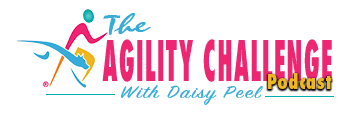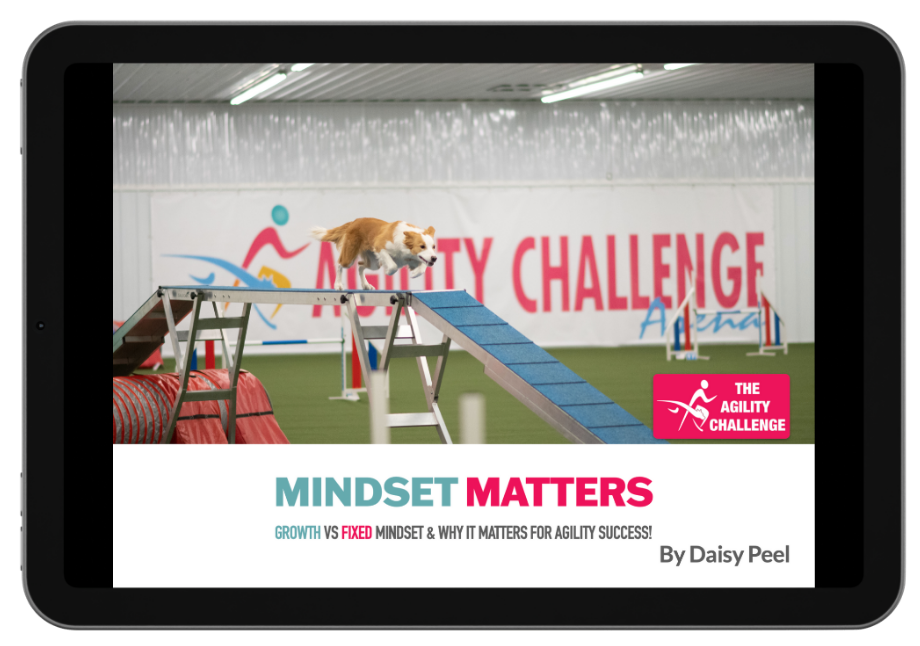This week’s Agility Challenge Talent Tip is…Embrace Struggle. Here’s an excerpt from Daniel Coyle’s Little Book of Talent:
At all of the talent hotbeds, from Moscow to Dallas to Brazil to New York, I saw the same facial expression: eyes narrow, jaw tight, nostrils flared, the face of someone intently reaching for something, falling short, and reaching again. This is not a coincidence. Deep practice has a telltale emotional flavor, a feeling that can be summed up in one word: struggle
~Daniel Coyle, The Little Book Of Talent
I’ve brought this up again and again, in podcast episodes, private lessons, workshops, online classes, Office Hours – you name it. Embracing struggle can itself be a struggle for me, and I know I’m not alone or unique in this, or it wouldn’t be written up in memes, motivational quotes telling me to embrace struggle, or the book that I reference in this mini-podcast episode each week. Even so, saying to embrace struggle, and knowing that embracing struggle is good is one thing – actually fully being able to be in that mindset is something entirely different, especially if it’s not a mindset that you were brought up with, or have ease getting on board with.
In his book, The Little Book Of Talent, Daniel Coyle points out what we all know – that most of us instinctively avoid struggle.
Struggle is uncomfortable.
It doesn’t feel good.
It feels like failure.
At any level in sport, but especially at the higher levels, and if you have an inexperienced teammate (I have two, currently!), or if you’re actively working to GET to a higher level in the sport, heading to a competition, running hard courses…it can really feel like a struggle, and then almost immediately, like failure. At the moment, I have two youngsters, both less than 3 years old, and we’re getting to the point where we have a lot of brilliance in our runs, but also, not so many CLEAR rounds. It’s just little stuff, sometimes just ONE little thing at this point, which, at the level we’re competing at, is pretty impressive for their age, but still, sometimes, it can feel like a struggle.
Many might ask why in the world would somebody continue to put themselves in the face of feeling frustrated, why would anybody want to struggle?
Well, when it comes to developing your talent, struggle isn’t an option – it’s a biological necessity.
As Coyle says, this might sound strange, but it’s the way evolution built us. The struggle and frustration you feel at the edges of your abilities – that uncomfortable burn of “almost, almost” – is the sensation of constructing new neural connections, a phenomenon that the UCLA psychologist Robert Bjork calls desirable difficulty. Your brain works just like your muscles – no pain, no gain.
Your brain works just like your muscles – no pain, no gain.
UCLA Psychologist Robert Bjork
I know this. I’ve heard this or read this 1,000 times. And yet, sometimes, I still feel uncomfortable struggling. I still battle the urge to back away from it and retreat to a more comfortable place. I’ve definitely gotten better with this, through what else…practice!
So, how do we GET comfortable with really embracing struggle? How do we GET to a point where we can stand tall, wade right in and rumble with struggle, and have the faith and confidence that not only will it result in growth, but that what we consider to be a struggle NOW will soon be within our comfort zone? Awareness and recognition of the benefits of struggling is key, but also, practicing struggle for the express purpose of improvement is also key. As dog trainers and handlers, we also have the added responsibility to make sure that we’re aware of how much struggle our dogs are engaged in while they’re learning.
Developing talent for us is not so dissimilar to developing talent for our dogs; as living, breathing creatures, they will need to undergo some struggle as well to form new neural connections. So, how do we ensure that while there may be some struggle required, it’s all part of a fun game, with a very motivating reward? As handlers, we may have some complex and maybe not even tangible motivators that keep us going despite struggle – but how can we set things up so that we develop our own talent AND the talents of our dogs? For me, from the time my dogs are puppies, I try to develop a sense of inquiry and a love for solving puzzles. Tasks may not be easy, but there is a lot of encouragement to persist, and high rates of reinforcement along the way for reaching clearly defined and well broken down goalposts, and big jackpots and genuine celebrations of success, particularly when I can tell that the task has been a struggle for the dog.
Take this recurring topic for the handling and training challenges, for example – sending to an obstacle. Moving away from the handler to take an obstacle that has been cued with only a verbal and an arm cue, while the handler moves away, can be VERY difficult for dogs psychologically. It seems like a simple thing to us, and it may be, physically speaking. But there can be a high degree of uncertainty associated with whether or not the dog should take the obstacle in question, in the dog’s mind. They too, can feel like something is a struggle, and this is an example of something that may feel challenging and uncomfortable to the dog. It’s also something that we may not recognize as challenging, and so we fail to recognize and reward it as such.
Embracing struggle can be a struggle in and of itself. It seems to come easier for some than for others. But, again, that’s the result of practicing embracing struggle, over and over again. So, if you’re feeling like you’re struggling, remember that you’re in exactly the right place for growth to occur, AND, make sure you keep some records, so that when you’re struggle has moved on to more advanced or different topics, you can look back, recall that what was once a struggle is no longer a struggle, and that while you may feel like you’re always struggling, you HAVE made progress!

